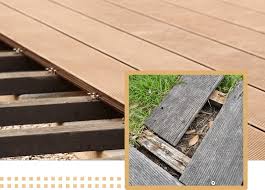Terrace covering is a practical and attractive solution for turning an outdoor living space an efficient and enjoyable area. Whether you’re looking to create a cozy retreat, protect your furniture from weather or simply increase the visual appeal of your terrace, understanding the various options and considerations is essential.
Types of Terrace Coverings
Pergolas: Pergolas are a popular option for terrace covering. They comprise a framework made up of posts that are vertical and horizontal beams, typically having an open-topped roof, or lattice design. Pergolas can be decorated with climbing plants, fabric drapes or retractable roofs for added protection from the sun and rain. They offer a semi-open space which combines openness and shelter, making them ideal to enjoy the outdoors while being partially shielded.
Gazebos are structures that stand on their own with solid roofs and wide sides. They provide more comprehensive protection against the elements than pergolas. Available in various sizes and shapes they can be outfitted with screens or curtains to block out bugs and offer additional privacy. They’re perfect for creating a dedicated space for dining or relaxation.
Retractable Awnings: Retractable awnings are flexible and practical. They can be extended or extended depending on the conditions. They can be retracted or extended and allow you to alter the amount of coverage as necessary. They are made of durable fabrics such as acrylic or polyester retractable awnings work well in blocking UV rays and are simple to maintain.
Fixed Roofs: For a permanent solution, fixed roofs constructed of polycarbonate, steel or tiles may be installed. These provide complete protection from rain, sun and the wind. Metal roofs are durable and low-maintenance, while polycarbonate roofs are light and let natural light pass through. Tiled roofs offer a traditional appearance, but they may require more upkeep.
Shade Sails Shade sails are a contemporary and fashionable option. They are made of UV-resistant, durable fabric, they are attached to posts or existing structures to create a canopy that can block out harmful sun radiation. They are available in a variety of sizes and shapes, allowing for creative and customized shading solutions.
Considerations for Choosing Terrace Covering
Climate: The climate of your area will determine the most suitable kind of covering. For regions with heavy rain, fixed roofs or gazebos could provide more protection. In warmer climates, alternatives like shade sails, retractable awnings are a good way to control the sun’s rays.
Aesthetics: Consider how the covering will fit into the overall design of your garden and home. Materials as well as colors and styles are meant to blend seamlessly with your current decor.
Maintenance: Different covers require varying levels of maintenance. Fabric-based options may need regular cleaning, whereas metal and polycarbonate roofs are generally more low-maintenance.
Budget The amount you budget for will play a significant role in selecting the most suitable option. While some covers, like pergolas, are more affordable, others such as fixed roofs, might require a larger expenditure.
In the end, terrace covering (terasz burkolat) offers a option to improve your outdoor living space, giving you both functional and aesthetic appeal. When you consider the kind of covering that best suits your preferences and needs and preferences, you can create a relaxing and welcoming place to spend time in all year.

No Responses